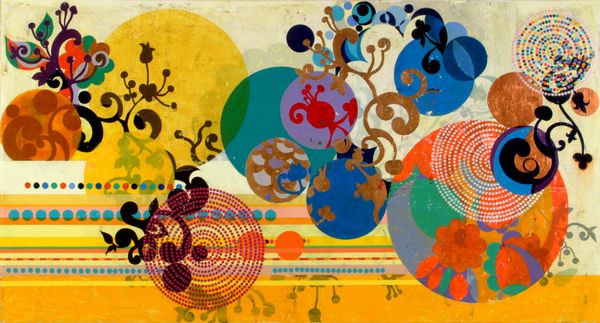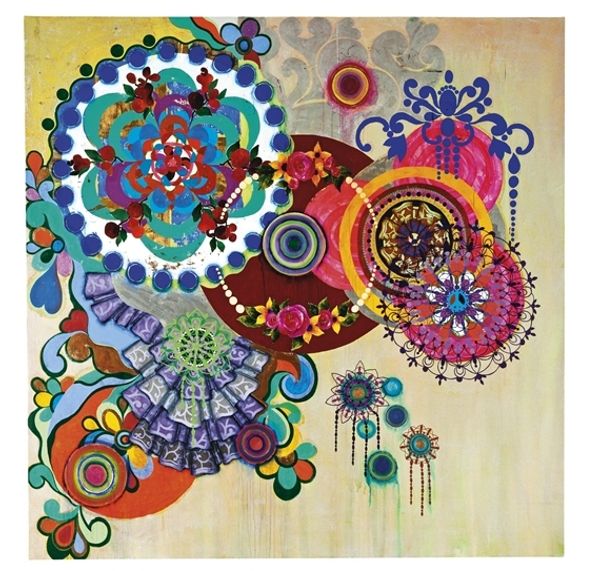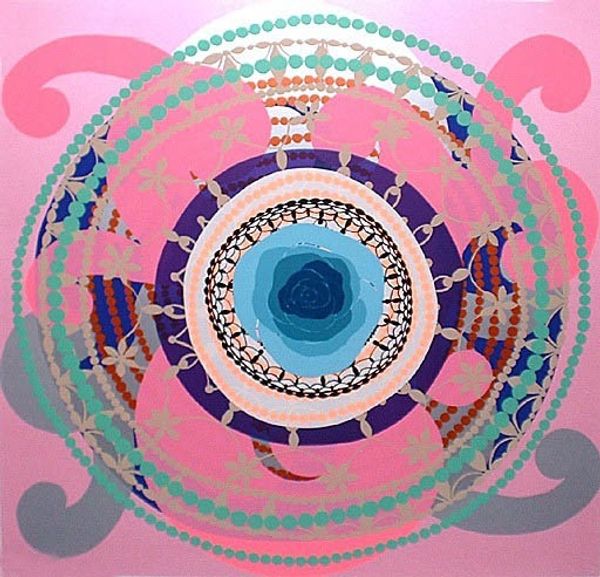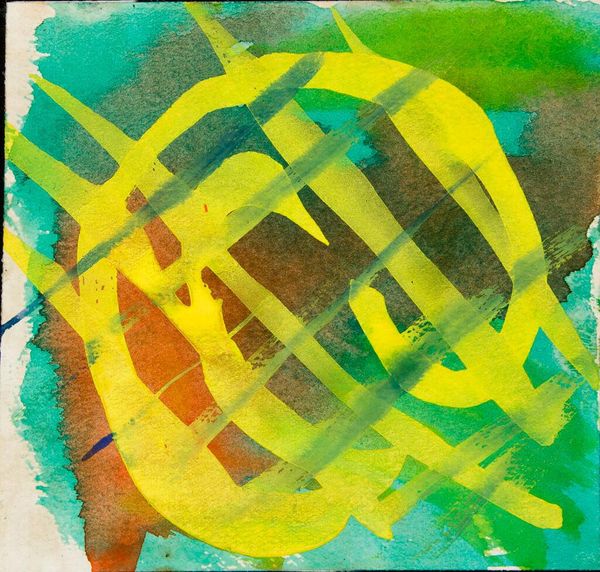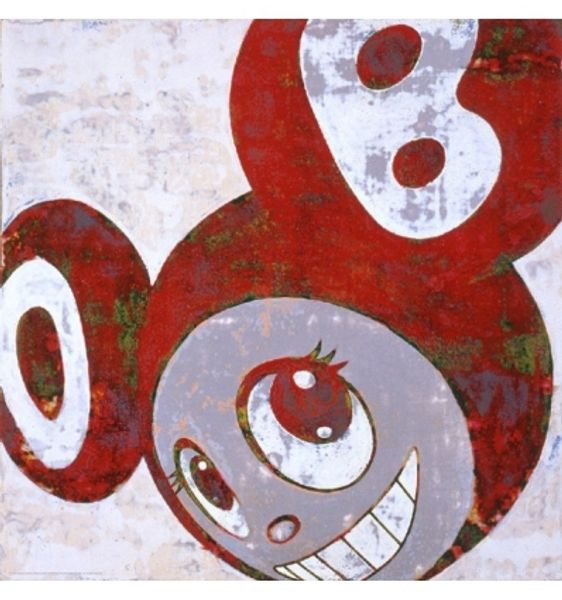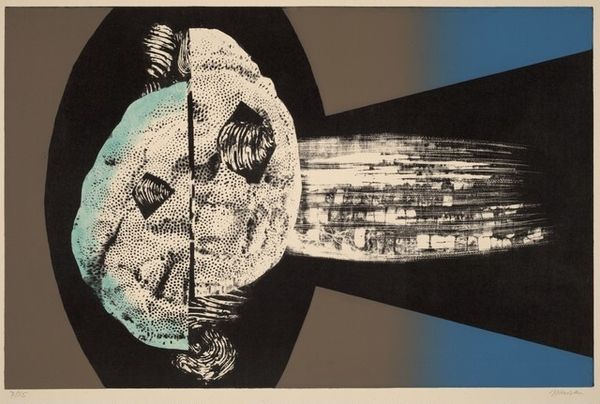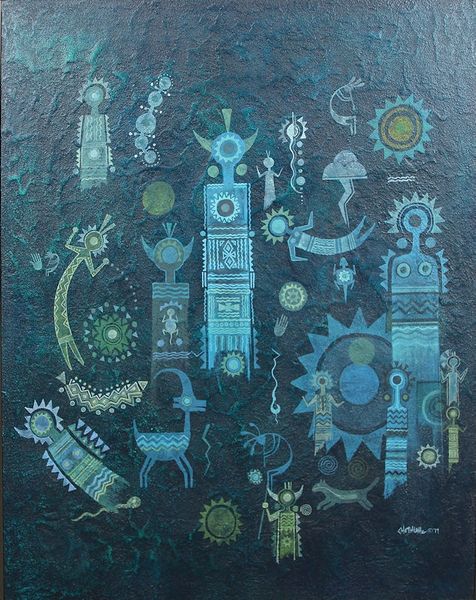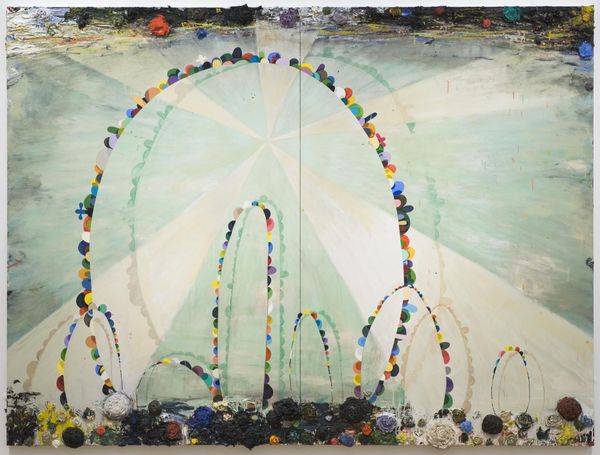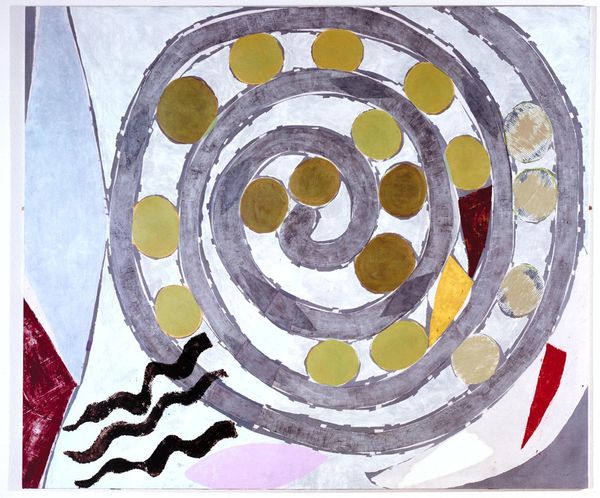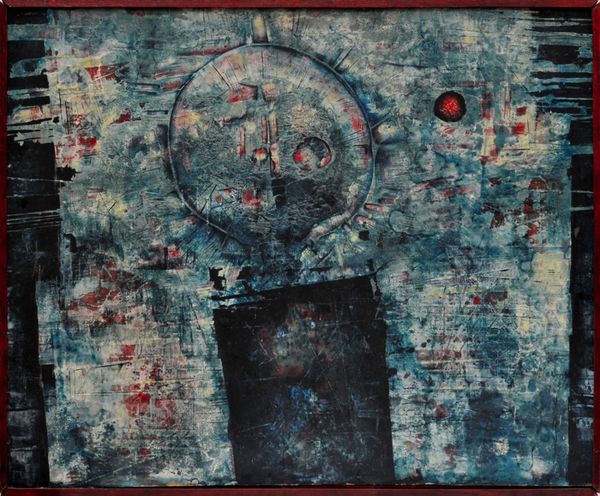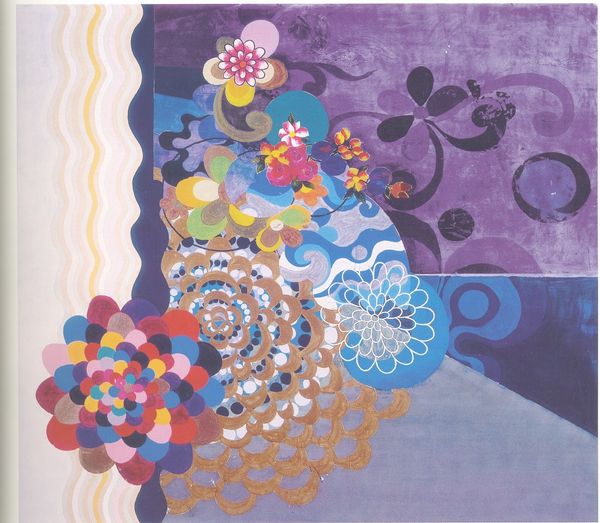
#
water colours
# print
#
folk art
#
figuration
#
geometric
#
naive art
#
abstraction
#
modernism
Dimensions: Image: 235 x 299 mm Sheet: 279 x 358 mm
Copyright: National Gallery of Art: CC0 1.0
Curator: We're looking at "Love that Makes the World go Round," a print by Julio De Diego, dating to about 1947. Editor: It strikes me as surprisingly optimistic, despite the rather mechanical imagery. The cool blues contrasted with those warmer reds give it a kind of dreamy energy. Curator: It’s fascinating to see De Diego, known for his Surrealist leanings, engaging with such almost folk-art inspired imagery. I see it as part of a broader postwar interest in redefining national identity through art. There’s a deliberate simplicity, accessible even, to the visual language here. Editor: The prominent gear wheels immediately speak to industry, manufacture, but made somewhat delicate by the watercolour aesthetic. Note also, how they encircle that heart. The printing process itself allows for layering, almost mimicking the accumulation of meaning. What do you make of it? Curator: The presence of a heart motif right at the center reframes those industrial gears you noticed. The clock face too; suggesting the role of love at the very core of social progress. It hints at a collective yearning for renewal. This was just after WWII, after all. Editor: True, those celestial references as well—like the constellations scattered across the background—aren't separate from that mechanical centre. They’re linked by dashed lines, suggesting the interconnectedness between natural forces, labor, and human emotion. Curator: Exactly. De Diego created this during a period when American artists were navigating a very specific set of political and cultural concerns. Consider also the rise of abstraction. So what you called "folk-art" maybe actually indicates a desire for visual clarity at the end of a really dark period. Editor: It's the accessible printmaking that I consider an integral component. It brings into question the societal conventions governing what constitutes art. Who is its supposed to be "for," and why is that significant? It presents challenging questions, indeed. Curator: Absolutely. It forces us to ask questions about how we frame art and history within wider contexts, which is the very core of this artist’s value. Editor: And to explore the tension between craft and industry that exists even now in society and to recognise that it has significance.
Comments
No comments
Be the first to comment and join the conversation on the ultimate creative platform.
